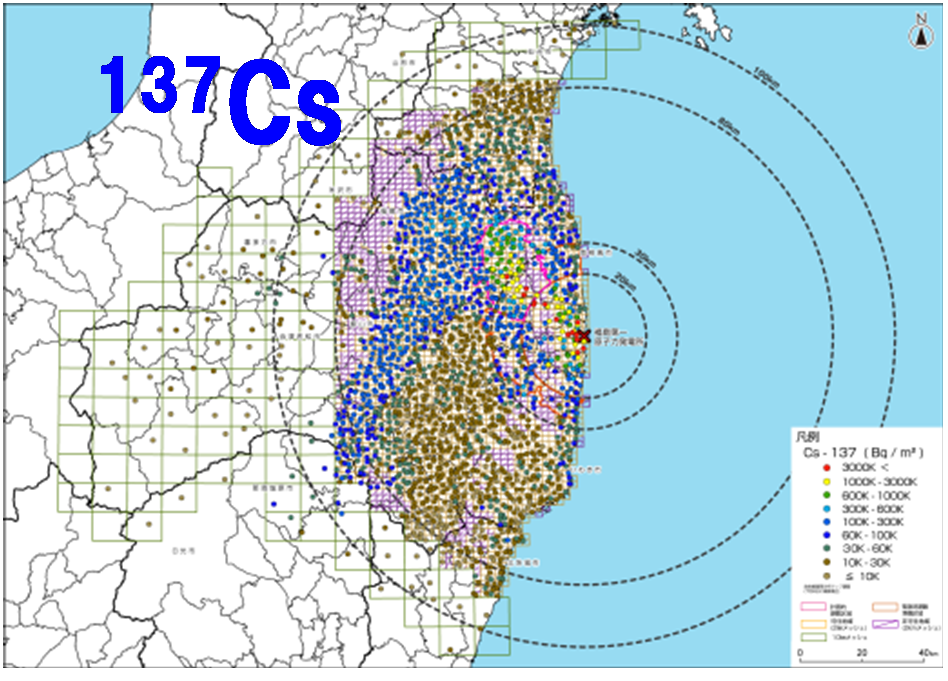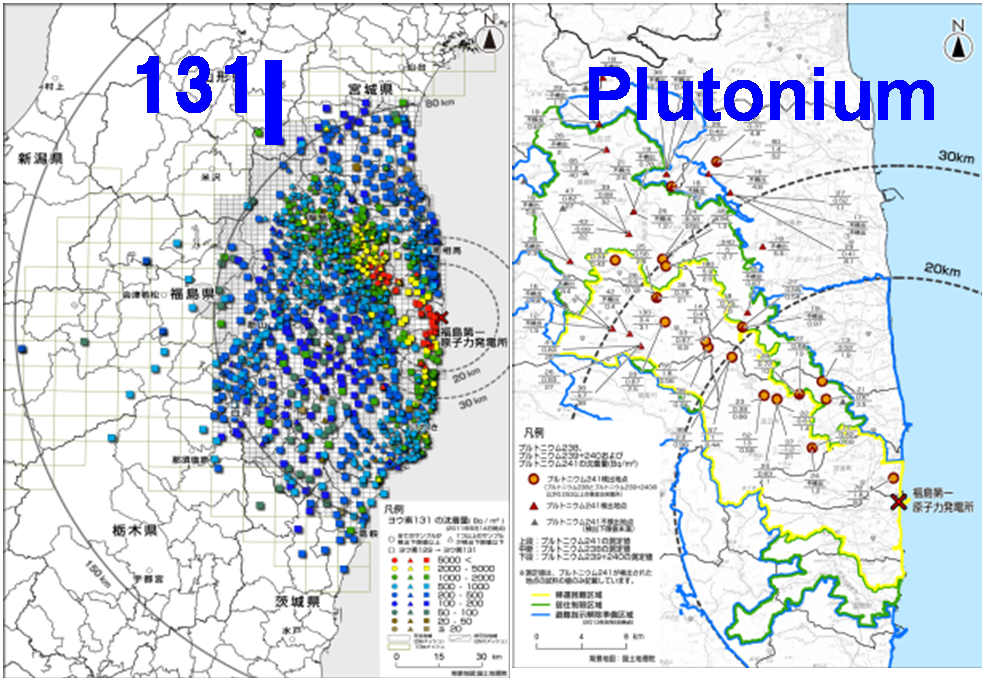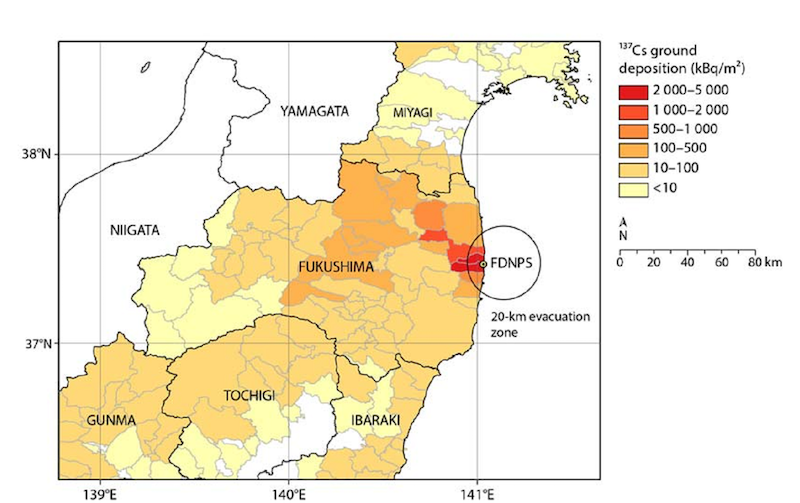Radioactivity and Air Dose Rate
(2015)
QWhere were radioactive materials deposited and in what quantities?
AIt was confirmed that radioactive iodine and tellurium deposited as well as cesium just after the accident. But now, radiation exposures are mainly caused by radioactive cesium.
- Radioactive nuclides that were confirmed to be deposited in many places by the accident were cesium (134Cs and 137Cs), iodine (131I), tellurium(129mTe), silver (110mAg), plutonium (238Pu, 239+240Pd and 241Pu), and strontium (89Sr and 90Sr).
- Radioactive cesium deposited across a wide region of east Japan.
- The amount of radioactive strontium and plutonium deposited in soil was within the range of levels that existed before the accident.
- Radiation exposures were estimated based on measurement data. Long-term radiation exposures will mainly be caused by radioactive cesium, while the contribution of plutonium and strontium to radiation doses is expected to be low.


Fig.1 Maps of deposited radionuclides estimated by analyzing soil samples (June, 2011)

Fig.2 Cs-137 deposited amount evaluated by United Nations Scientific Committee on the Effects of Atomic RadiationUnited Nations Scientific Committee on the Effects of Atomic Radiation (Report by UNSCEAE, 2013)
Related articles
References
- 原子力規制委員会(2012): 放射線量等分布マップの作成等に関する報告書(第1編).
https://radioactivity.nra.go.jp/ja/docs/reps/rad-dist/research-results-part1 (2024.11.18アクセス) - 原子放射線の影響に関する国連科学委員会(2015): 電離放射線の線源, 影響およびリスク; UNSCEAR 2013年報告書, 第Ⅰ巻 国連総会報告書 科学的附属書A: 2011年東日本大震災後の原子力事故による放射線被ばくのレベルと影響, United Nations, New York, 306p.
https://www.unscear.org/docs/reports/2013/15-0285_Report_2013_AnnexA_Ebook_web.pdf (2024.11.18アクセス) - 文部科学省,“放射線量等分布マップ拡大サイト”.(サイト閉鎖)
